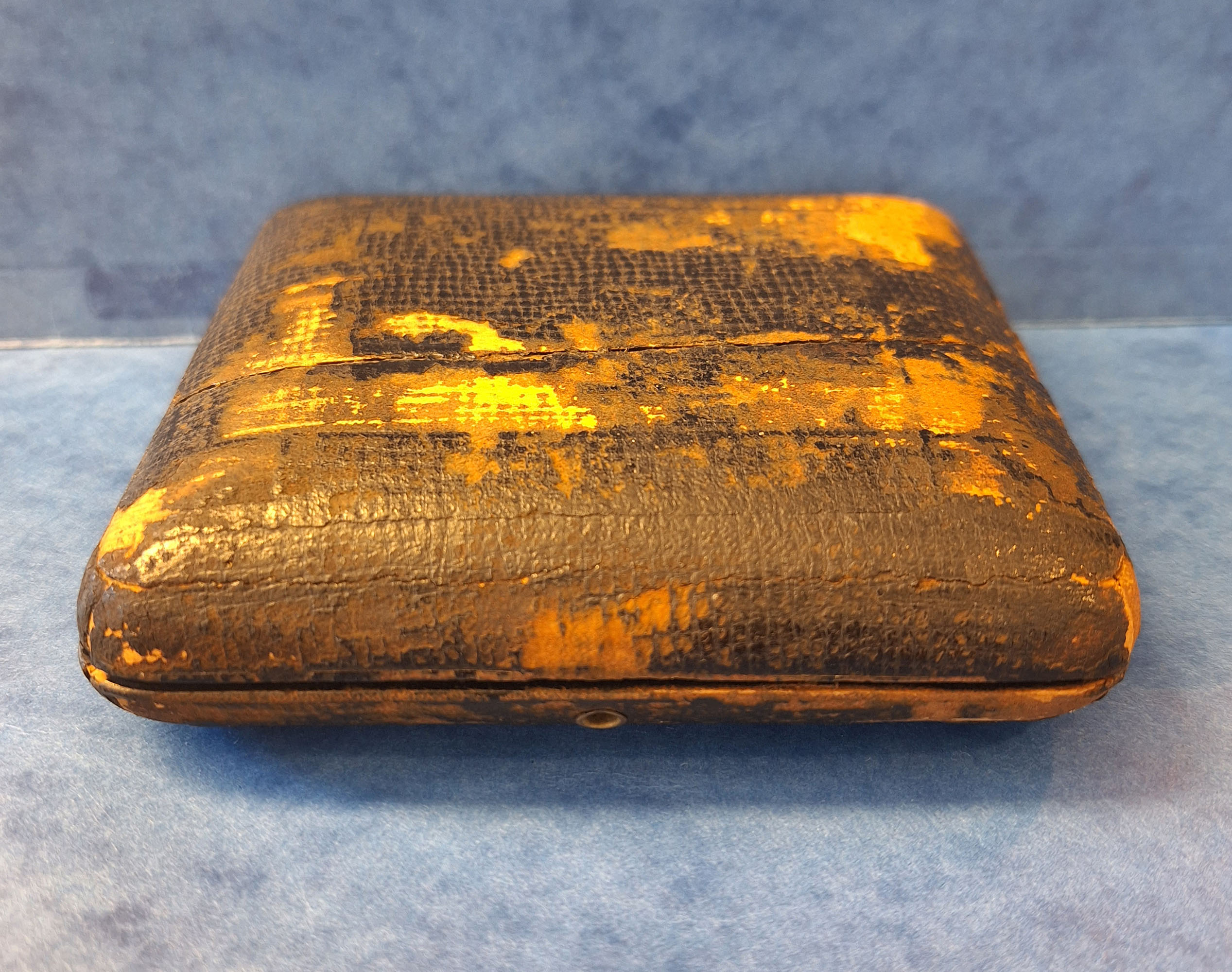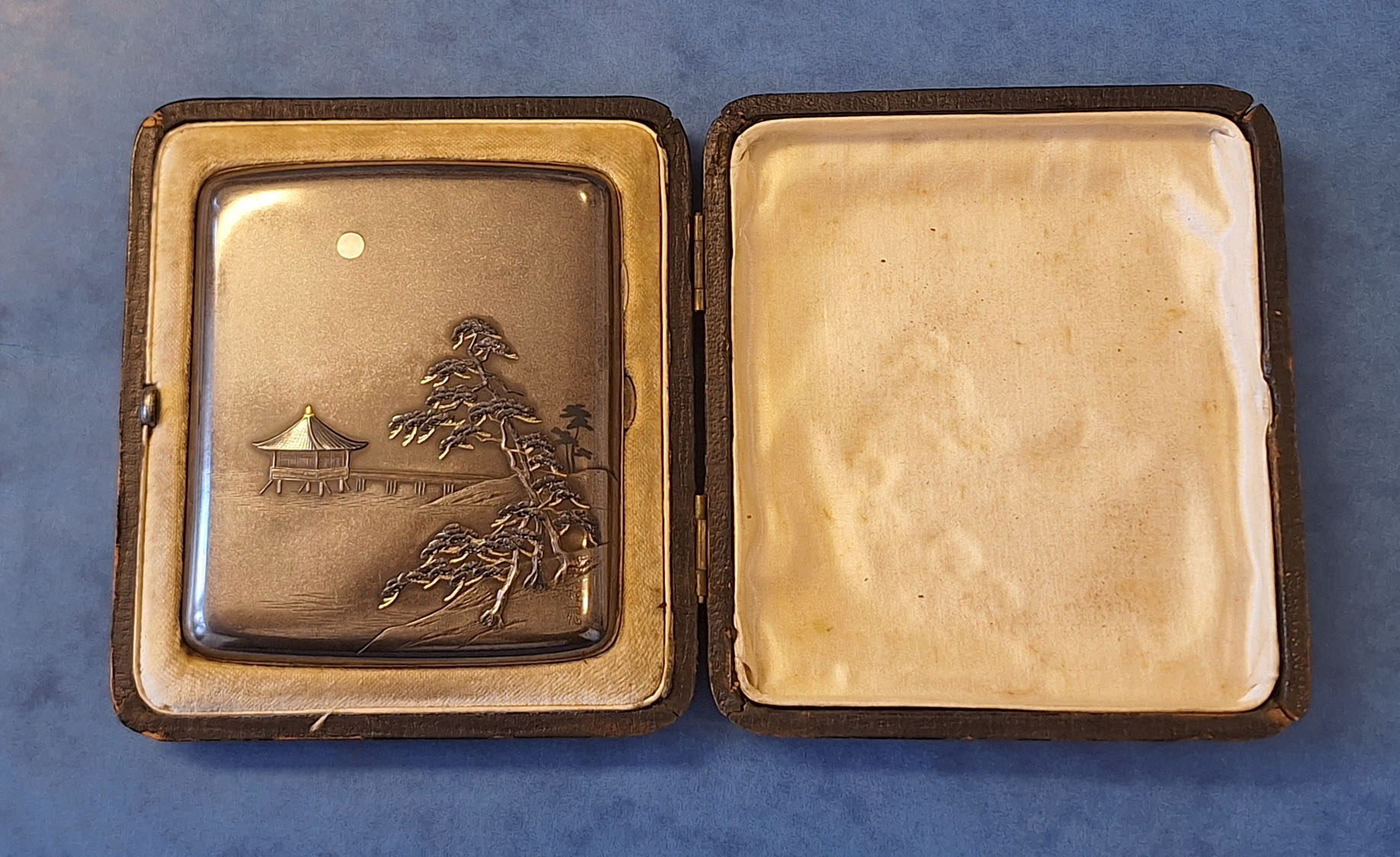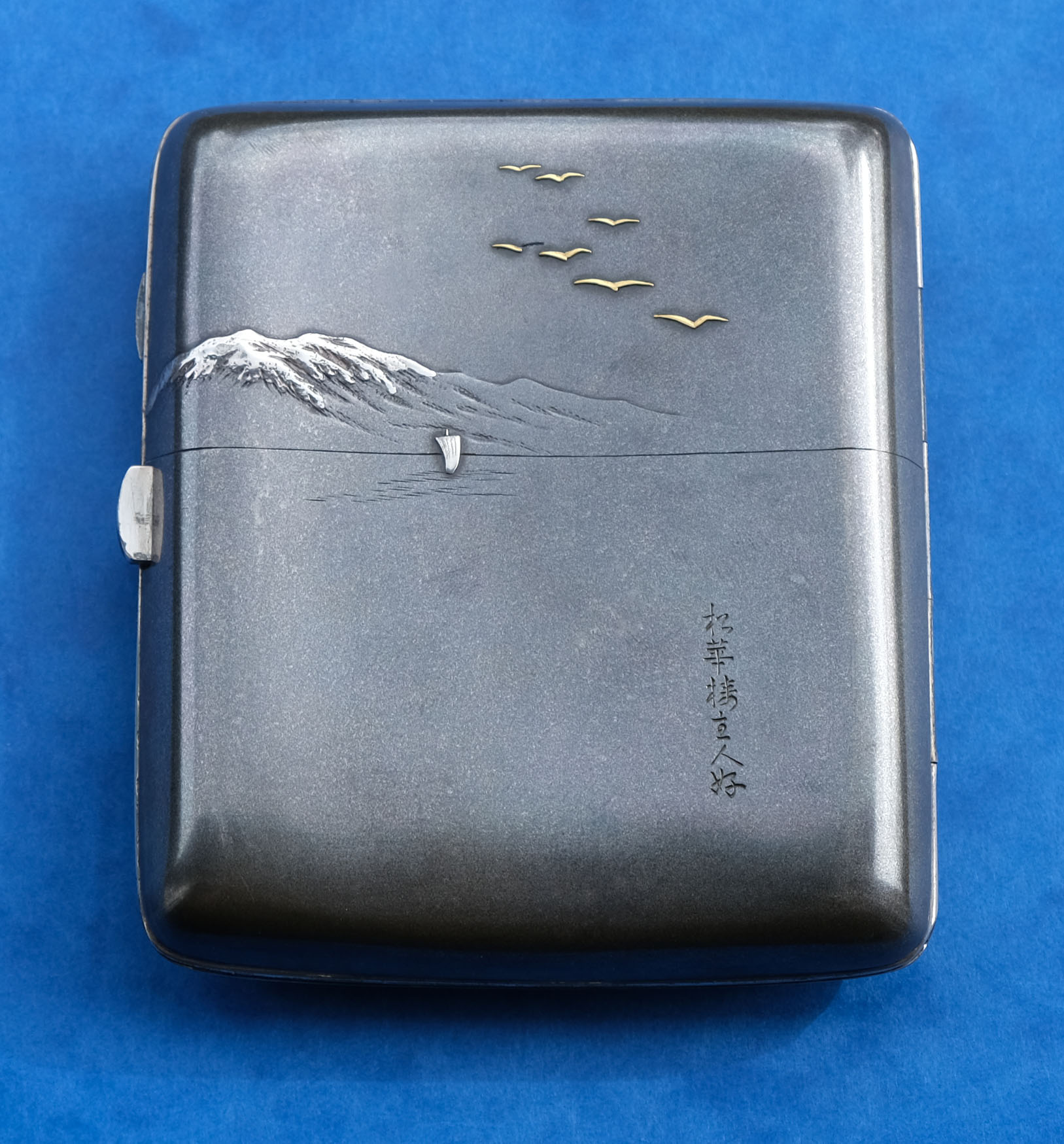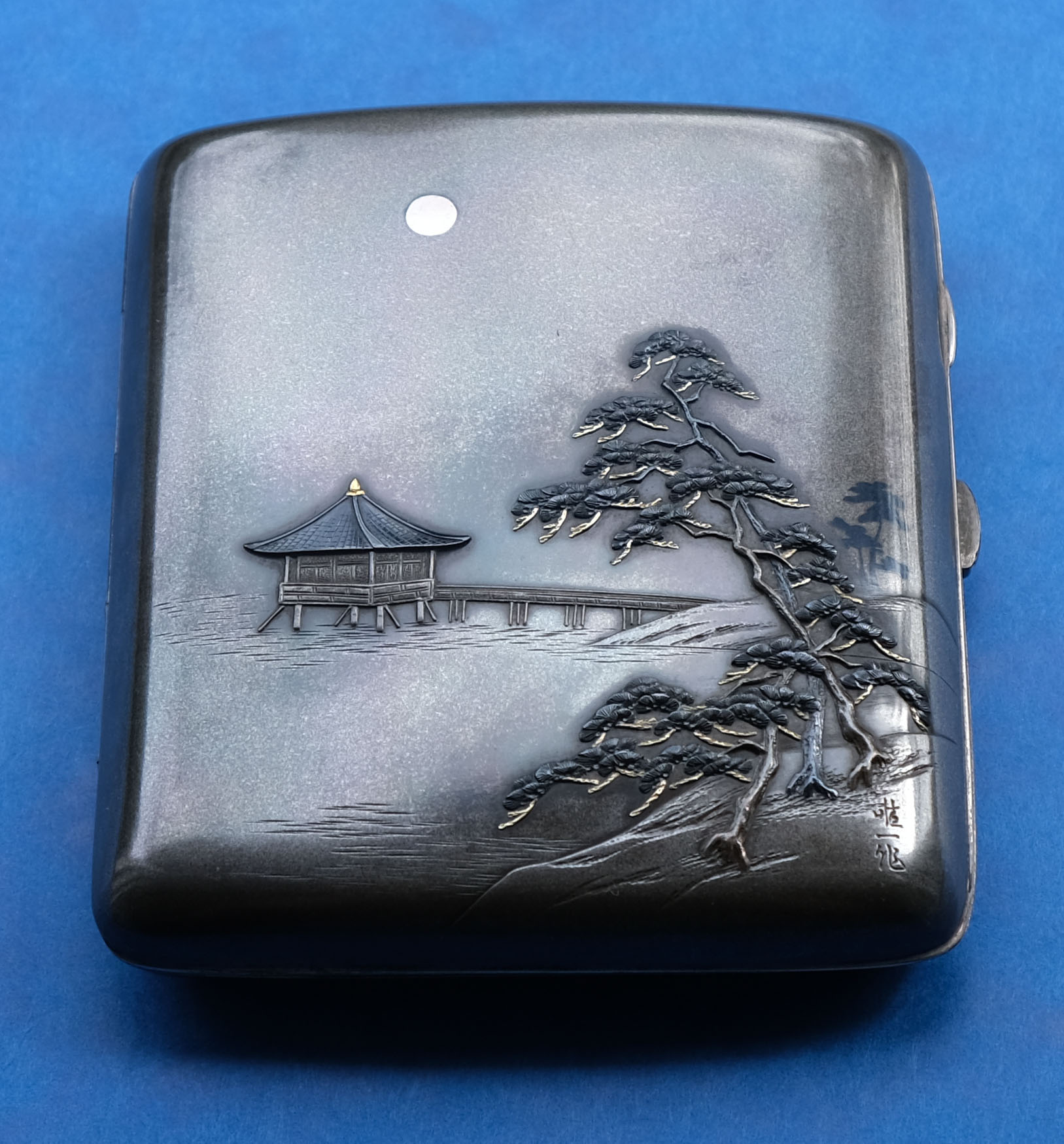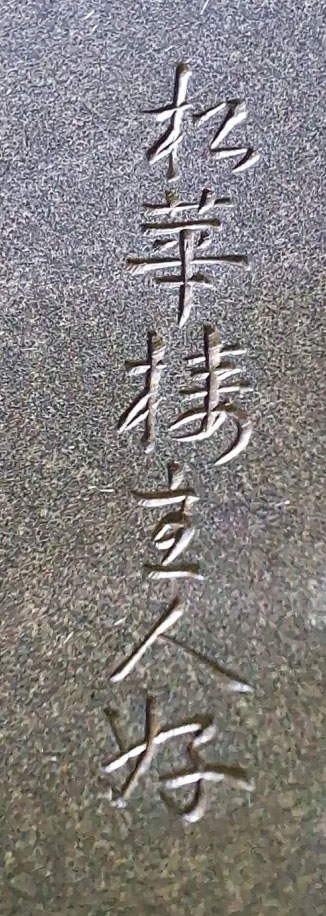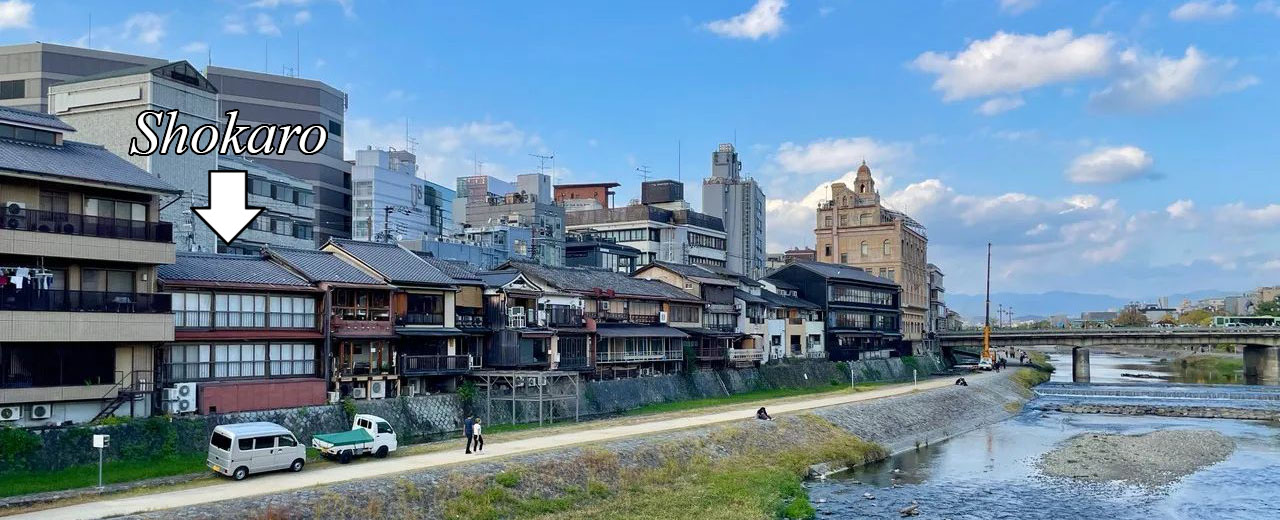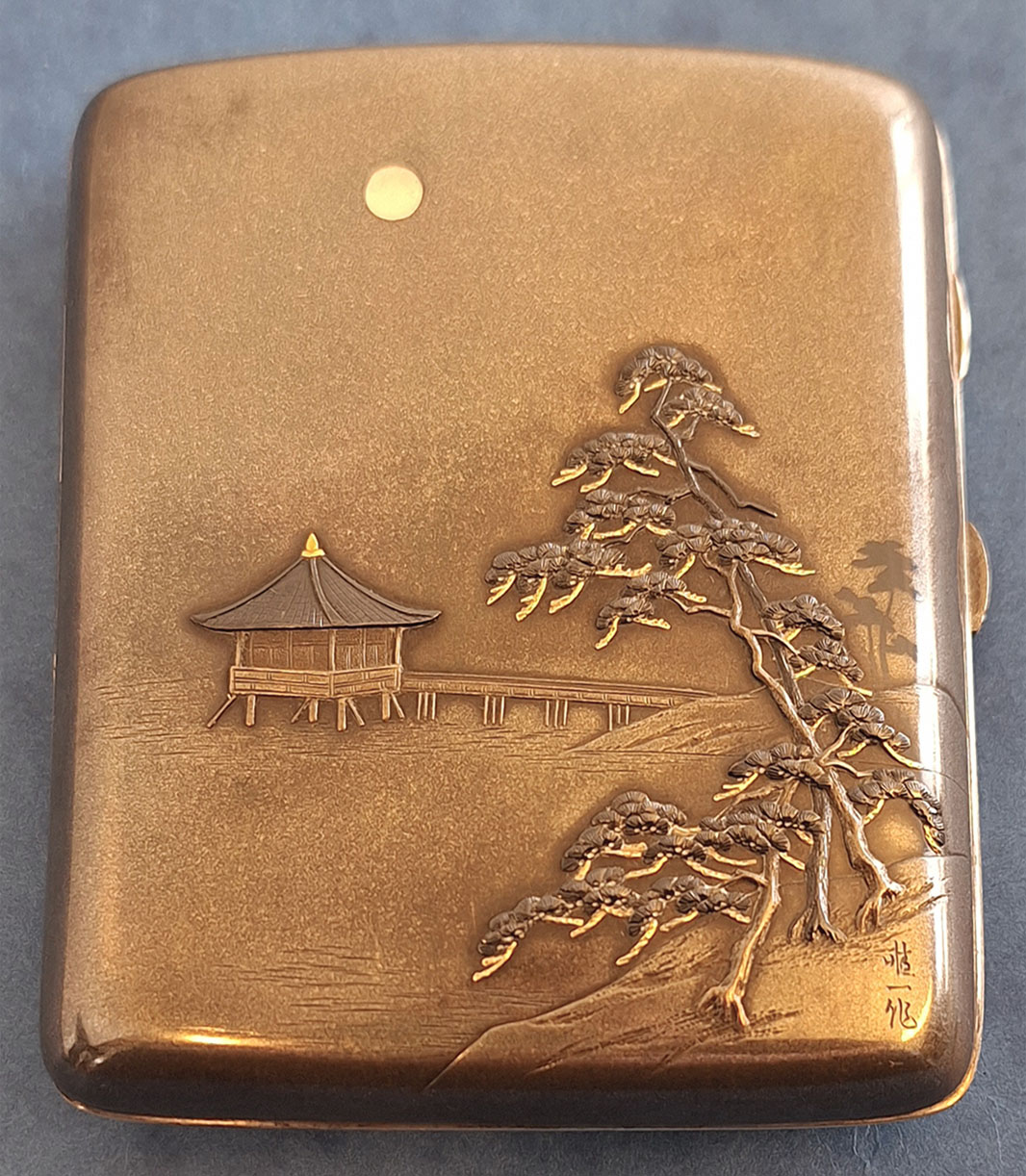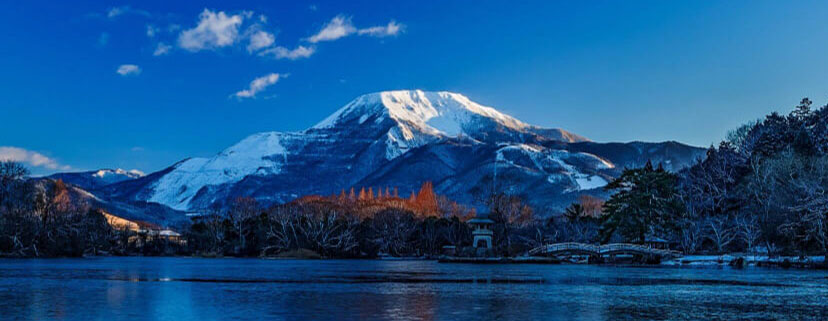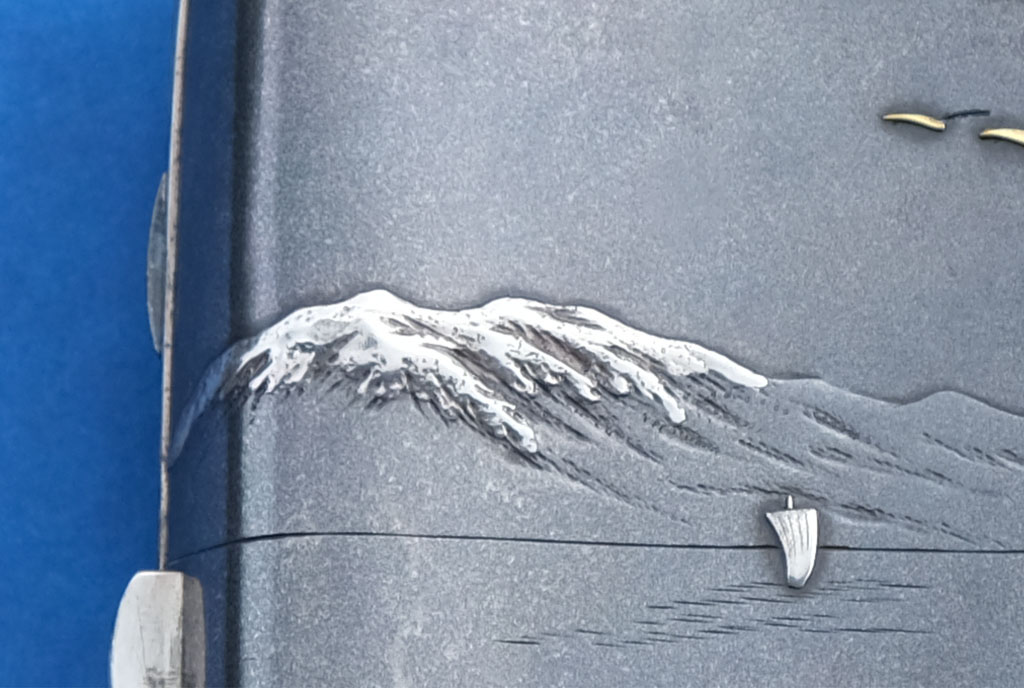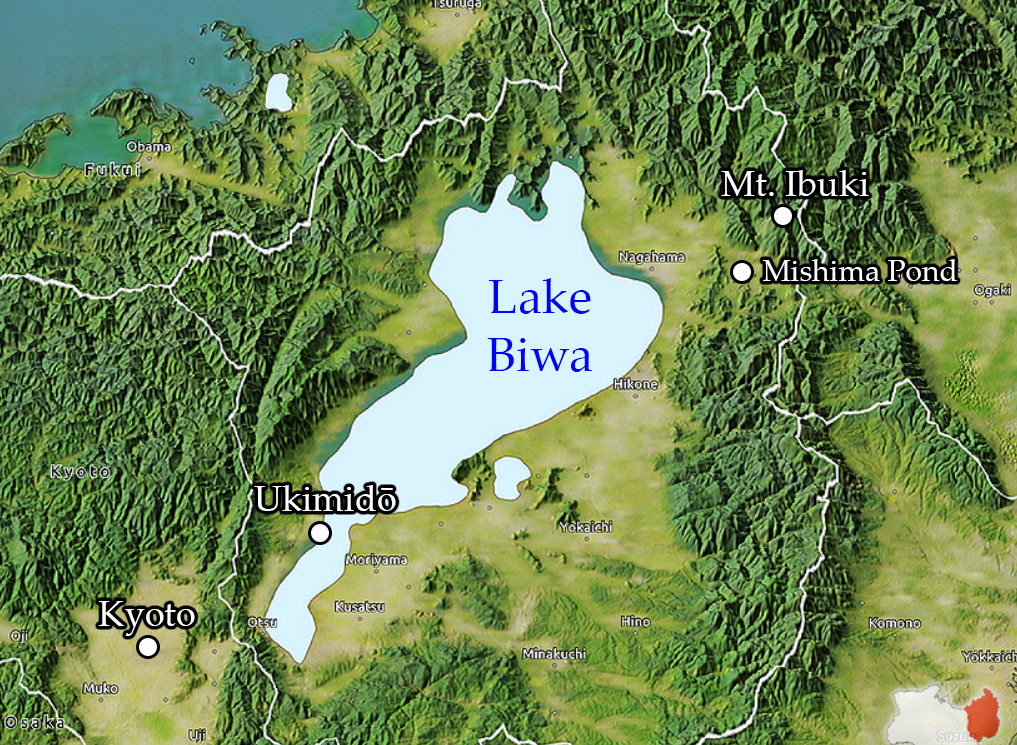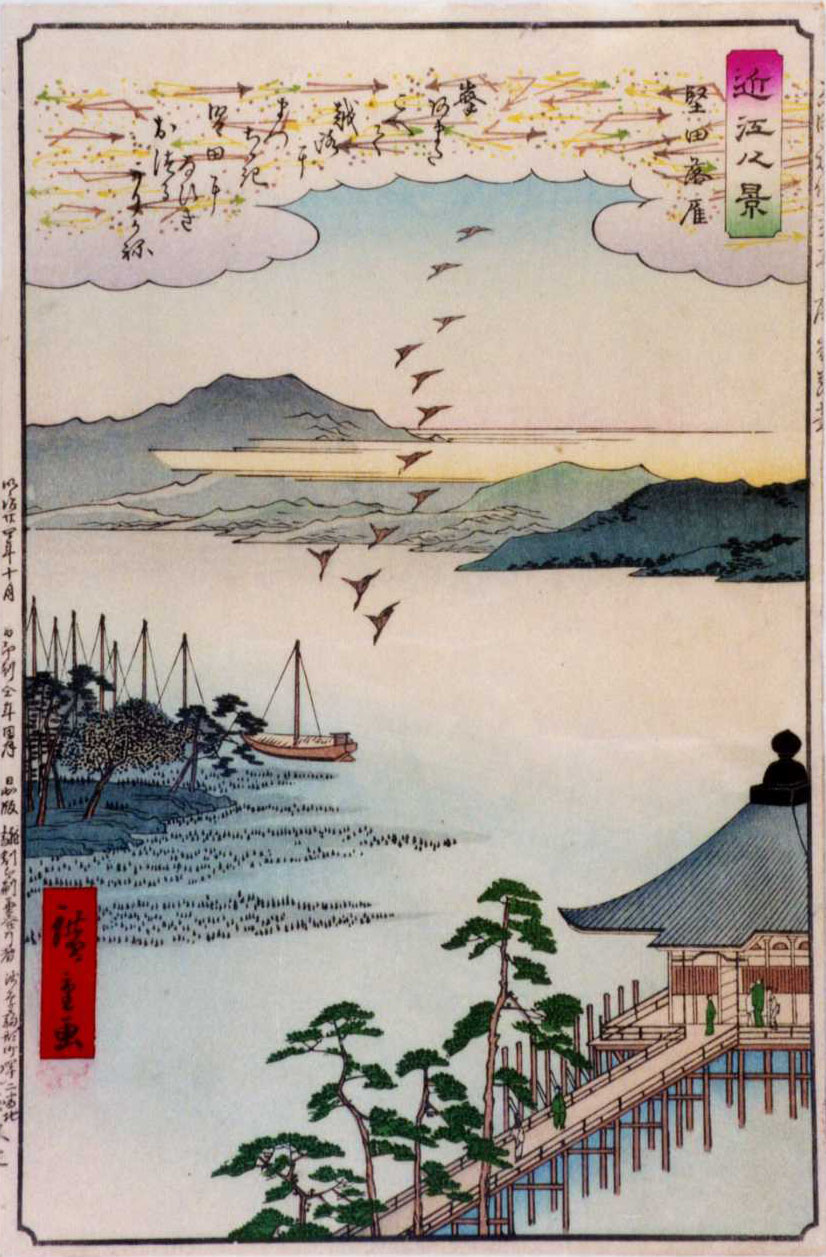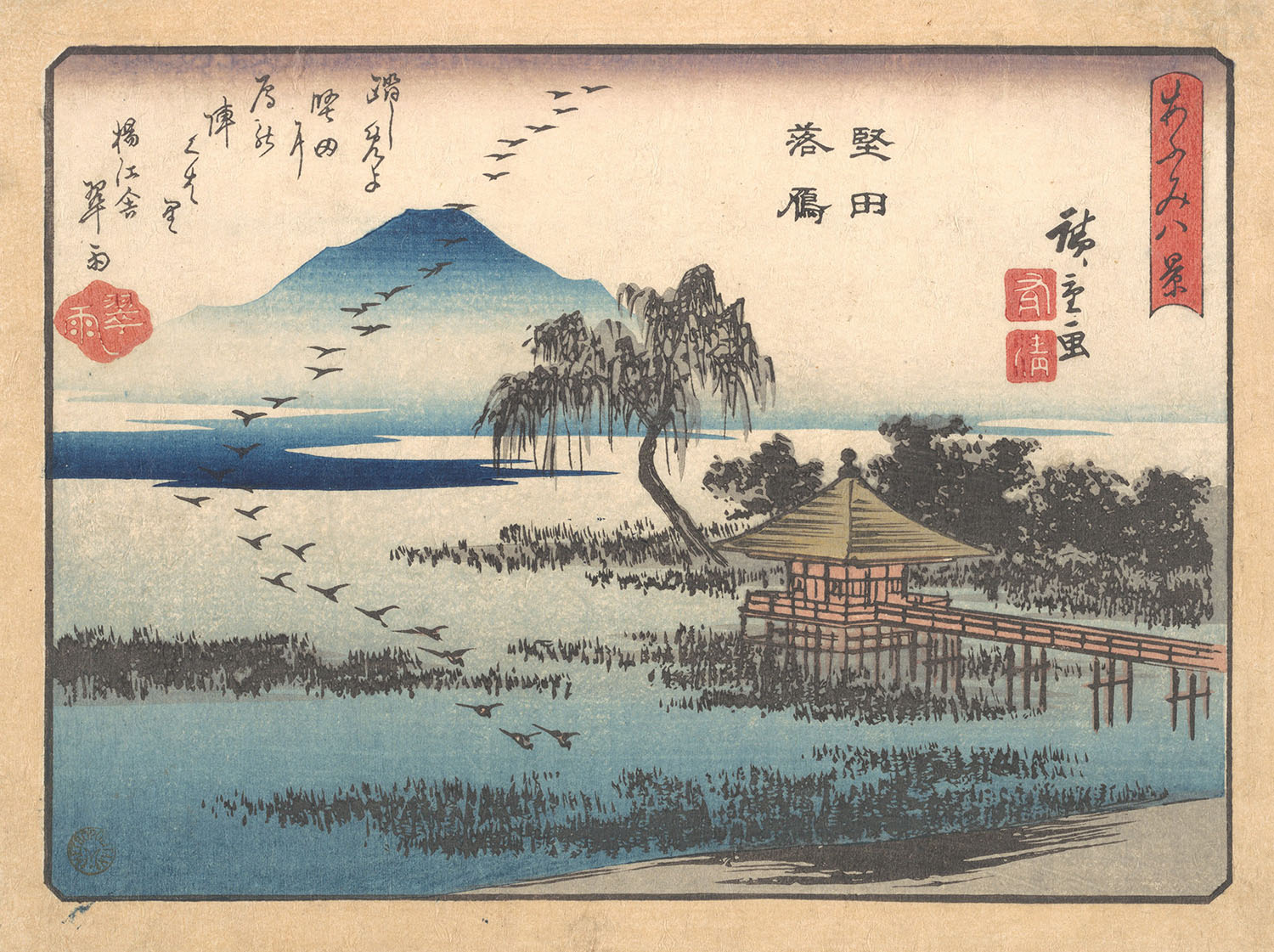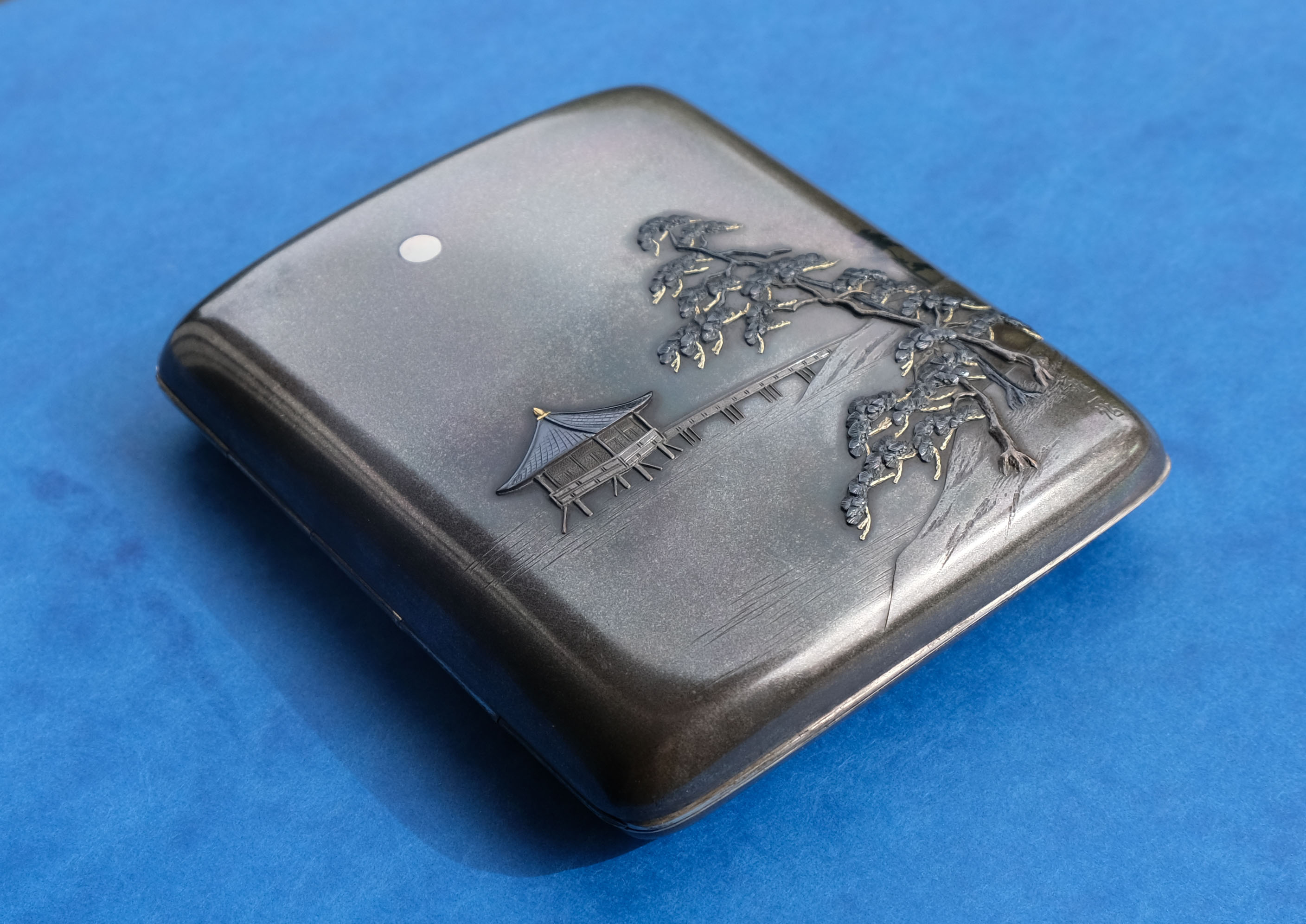
All images below are clickable - click to open the full-size image in a new tab
唯一作
which means "Made by Tadakazu".
The inscription is more complex and says
松華樓主人好
which can be literally translated as "favor/preference of the master/owner of Shōkarō". Here, 松華樓 is "Shōkarō", 主人 is "master/owner" and 好 ("favor/preference") back at the time meant that the product was designed, ordered and manufactured according to the taste / favor / requirements of the owner of the place inscribed. Such a practice was quite common. Firms ordered products with the inscription in advance and distributed among their most valuable customers.
Example of an inkstone, ordered by the request of the 古梅園 ("Kobaien") company, engraved with 古梅園主人好 ("favor of the master of Kobaien").
Location of the Shōkarō ryokan on a vintage, circa 1933, (left) and modern (right) maps.

A bronze box by Tadakazu.
| 1. |
Nogawa workshop was located one block to north-west, just 200 meters, from the Shōkarō. The famous Shinmonzen and Furumonzen streets were not too far from the ryokan
either. However, among the metalworkers in the area, it was Nogawa who was well-known for his bronze works, as well as works in other copper alloys: shakudo and shibuichi, the latter
being the base metal of this cigarette case. |
| 2. | The tiny inlaid shakudo silhouette of trees is a fingerprint of Nogawa works. A simple plain shakudo silhouette appearing on the background of even heavily elaborate works with difficult inlaying techniques, high relief and mixed metals used, made Nogawa works distinguishable from the products made by others. |
The "floating temple" hall, Ukimidō.
Mount Ibuki, as seen from the Mishima pond (left) and from the Lake Biwa on the case (right).
Two "Descending Geese at Katata" woodblock prints by Utagawa Hiroshige, showing the same scene as the cigarette case: the Ukimidō on Lake Biwa, a flock of geese and Mount Ibuki.
References
"Red Cross Directory: Benevolence and Charity. Part 2", 赤十字名鑑 : , 博愛慈善 第2輯, 横田文之助 編 赤十字名鑑編纂所, 明39-40, 1906-1907, p. 58.
"Kyoto Architecture", 京郊民家譜 再版, 大阪毎日新聞社京都支局 編 便利堂, 昭和9, 1949, p. 14.
"日通文学", 41(10)(472), 日通ペンクラブ, 1987-10.
"Photo Guide" website.
"Biwako visitors" website.


